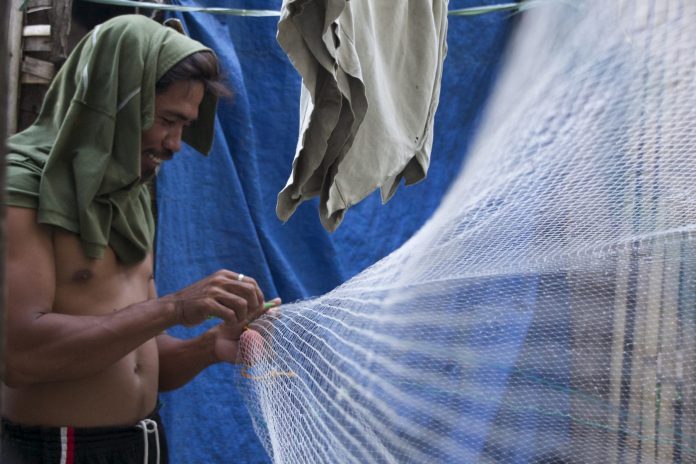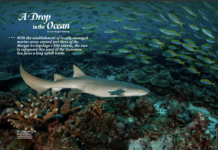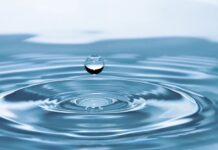Text Sarah Chew
Dusk falls over Danajon Bank in the Philippines. In the glow of the departing sun, the horizon burns vermilion and ochre, throwing flames across the great saltwater expanse to silhouette boats returning from yet another hard day’s work. The boats are towed ashore through unsightly debris, which floats on the surface like a mesh. The day’s catch is counted. Better luck next time… yet again.
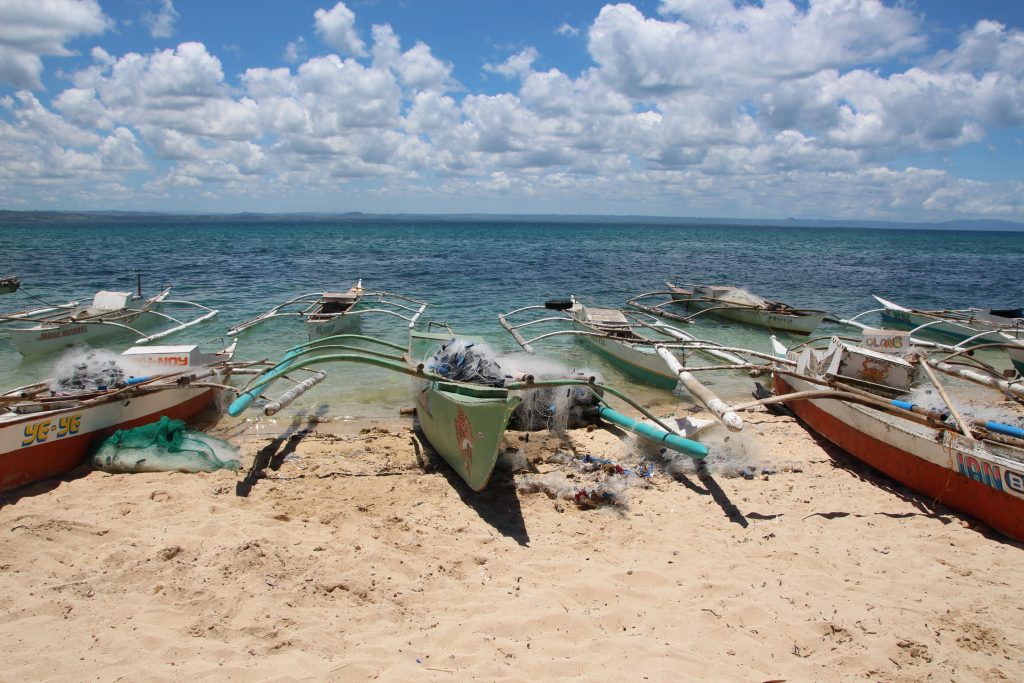
Danajon Bank’s biggest problem was once pollution: the unfathomable, debilitating garbage that blanketed its coastline and drove fish from the nets of communities that depend heavily on the sea for food and revenue. Ghost nets comprised the most damaging pollutant. Abandoning these nets was the only alternative to burning them. Floating along the shore, the nets ensnare marine animals and get tangled in coral, destroying the areas’s biodiversity. With fishermen pulling up fewer and fewer fish each day – and the health of the community declining – something had to give.
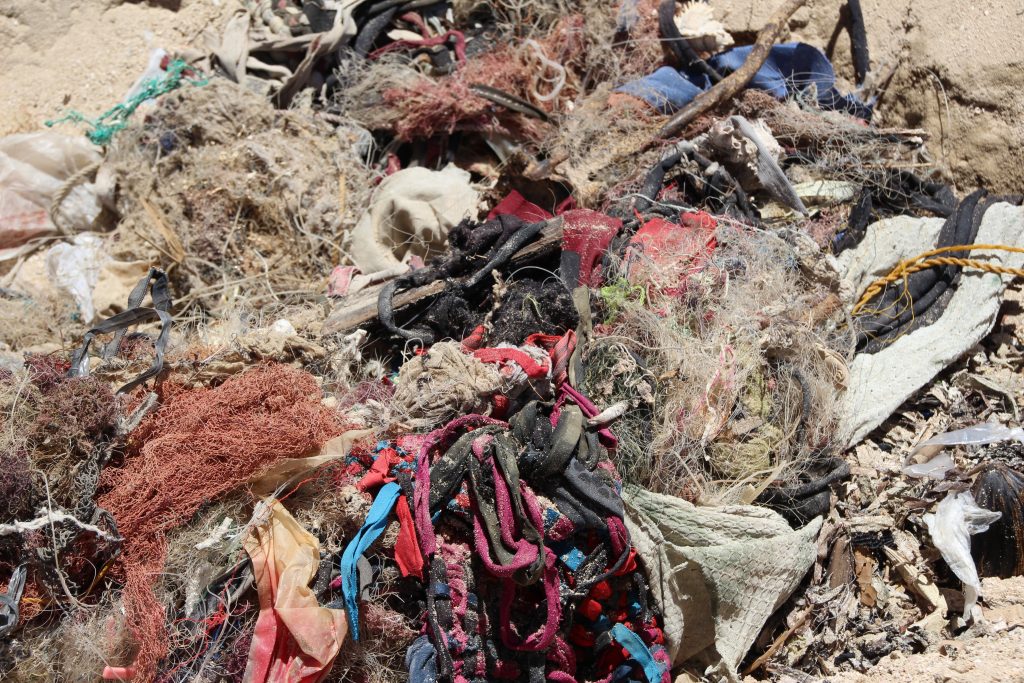
Change came in 2012 in the form of a groundbreaking partnership between the Zoological Society of London (ZSL), carpet tile company Interface, yarn producer Aquafil and the Negros Women for Tomorrow Foundation. The project began as an endeavour to bridge inequalities through carpet tile, and – however arcane a concept – Net-Works has become one of the most innovative solutions to marine pollution in recent years.
The community bank
The first breakthrough contribution that Net-Works makes to participating communities is in facilitating the establishment of community banks, the running of which is overseen by locals. The people of Danajon Bank have since been able to take loans, make investments and deposit savings at the banks, all of which many of us take for granted. These simple activities were once impossible in these communities. Locals have since used loans to start seaweed farms (among other things), the harvest of which belongs to a growing market for environmentally friendly and fairly traded materials.
The community banks are also the centre point for organising activities for improving of the community, such as beach cleaning and mangrove planting, the latter of which is crucial to the protection of beaches, while also providing a nursery for young fish to mature.
The supply chain
The project has established a supply chain to re-appropriate the nylon from which the nets are made, in the hope of putting an end to unsustainable disposal methods, and to breathe new life into a material strong enough for a wide range of applications. On average, a nylon net takes 600 years to break down. This figure fortifies the conviction of Net-Works’ participants and collaborators to incentivise communities to turn what was once seen as waste into opportunity.
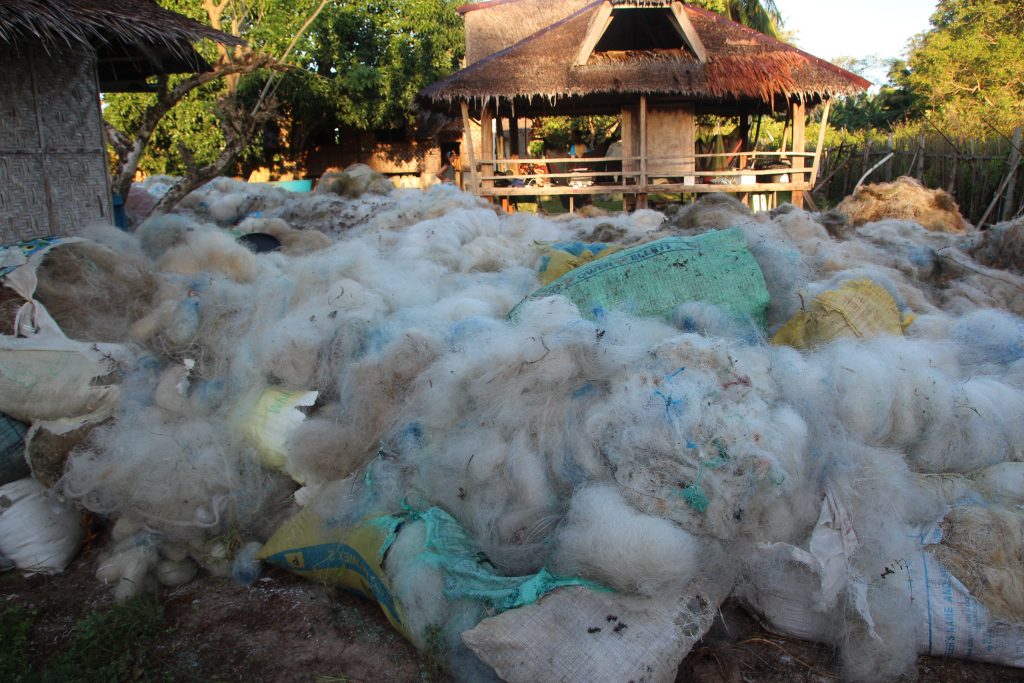
Nets that have been collected by the community (Image credit: Interface Inc.)
To begin the process, participating communities collect ghost nets from fishing fleets, and from the beaches and seas. Then, they untangle them and remove pieces of debris. The nets are mechanically compressed into bales. The balers they use to do this are an innovation in their own right, designed and built specially for the project. “We needed a cost-effective way to manually compress the nets, so that they could be turned into bales to be shipped,” says Net-Works’ project manager Farinoz Daneshpay in an interview with Asian Geographic. “There was no existing machine that was suitable, so we developed our own. It was co-designed by Interface engineers, ZSL’s conservation team and local fabricators. The design was refined following local community feedback and then turned into a sharable blueprint by Interface’s CAD design team. There are now four baler machines being used at Net-Works’ collection hubs in the Philippines and Cameroon.” The operation of the balers takes into account the relative inaccessibility of electricity in the region, which goes a long way in ensuring the project’s feasibility.
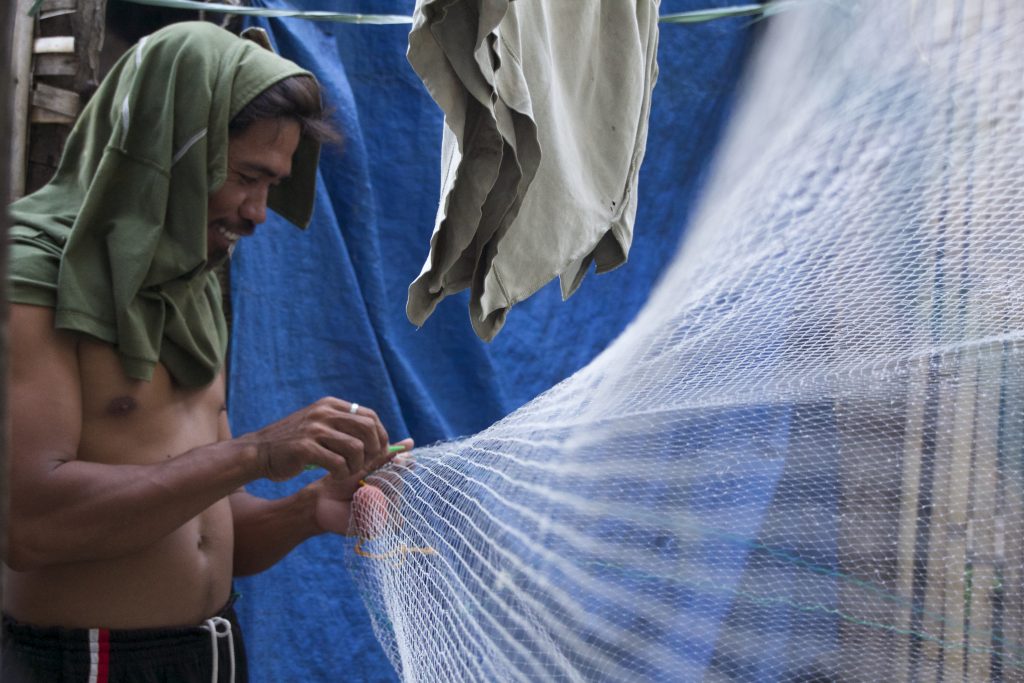
Next, Aquafil purchases these nets directly and has them exported to their processing plant in Slovenia. The company is a global distributor of Nylon 6 yarn, which is found in everything from toothbrush bristles to string instruments. In this case, the company processes the nets to yarn for carpet tile production.
Interface, the world’s leading carpet tile producer, buys the yarn from Aquafil and turns it into carpet tile, in product ranges their website boasts are made from 100 percent recycled yarn. With a system like Net-Works’, the pride is well deserved.
Social sustainability is as important as environmental sustainability
Net-Works covers all its bases – the project’s potential for social change is as apparent as its environmental impact. Daneshpay explains: “For ZSL, the goal was to develop a new model of community-based conservation, one that would be self-funding, empowering, and bring immediate benefits to local people.” Participating communities profit not only from the revenue that the sale of nets reels in, but also from access to financial services and the binding potential of collective community service. All this, while Net-Works eschews the “top-down” approach that characterises many a developmental project today, instead giving the community the room and agency to discover and implement their own solutions.
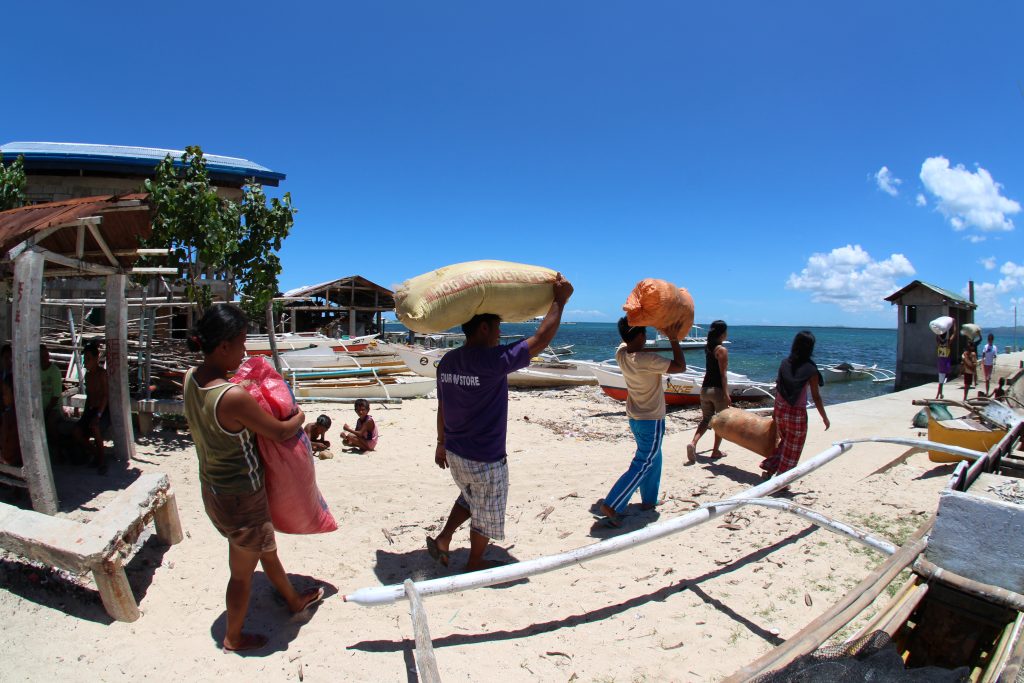
Community members with bags of used nets (Image credit: Interface Inc.)
Yet another interesting observation from the project’s implementation in Danajon Bank (and its other locations in the Lake Ossa region in Cameroon) is that two-thirds of community bank members are women. This is a small but significant victory on the gender equality front; in Asia, men have traditionally taken charge of managing household finances, but through projects such as Net-Works, women are gaining financial independence.
In October of 2013, a 7.2- magnitude earthquake shook the island of Bohol, making it the deadliest quake the Philippines had seen in 23 years. The devastation was compounded a month later with the violent arrival of Typhoon Haiyan, known in the Philippines as Super Typhoon Yolanda. The communities of Danajon Bank involved in Net-Works took a hard hit, but community savings and aid from Net-Works were a godsend during the rehabilitation process – throughout which they continued operations with Net-Works. “It was a real demonstration of their resilience in the face of adversity, and of their commitment to Net-Works,” Daneshpay adds.
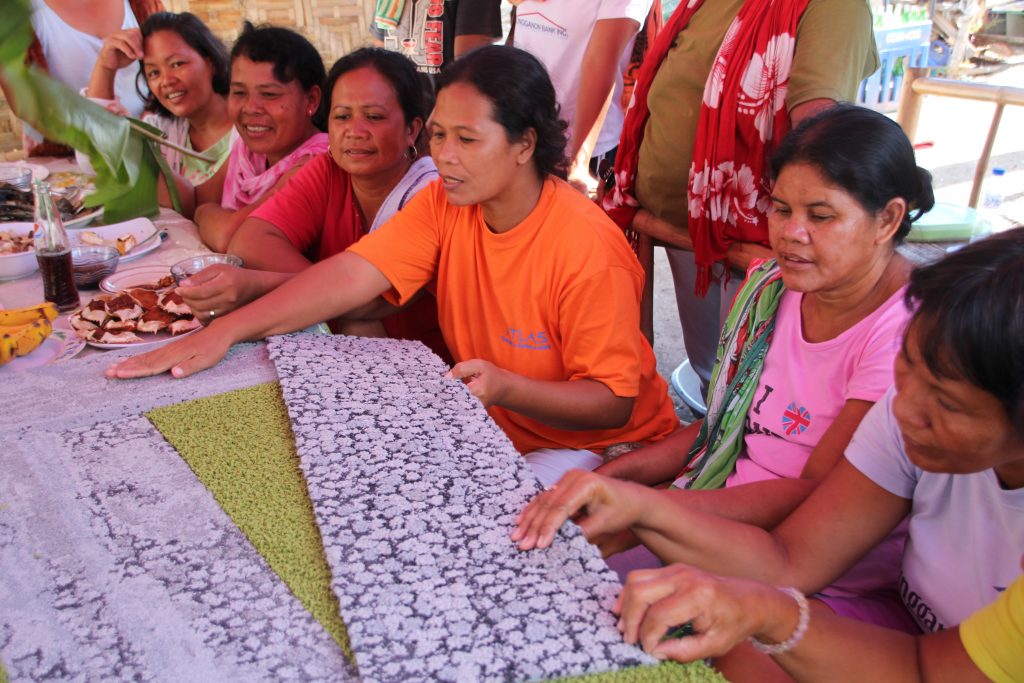
Seeing the end result: Carpet tiles made from recycled nylon yarn (Image credit: Interface Inc.)
Today, a growing number of fishermen in the Philippines and Cameroon sell their used nets to Net-Works, relieving the seas and the air from further pollution. Already, the difference is evident: Fish are returning and sands that hadn’t seen daylight in years are gradually emerging from beneath the garbage. As a direct consequence of the newly established community banks, more than 1,500 families in Danajon Bank and the Lake Ossa region have access to financial services. As a testimony to the project’s reach, the majority of community banks set aside money for investment in local conservation projects. But the work is far from finished.
Net-Works, now operating in 27 communities in the Philippines and nine communities in Cameroon, plans to bring the project to other less affluent communities all around the world. Looking forward to the project’s objectives for 2020, the next step is to increase the number of families with access to financial services from the present 1,500 to 10,000. So far, 62,000 people have seen their communities transformed by a cleaner environment, but Net-Works aims to grow this number to a million. Daneshpay elaborates: “Our long-term vision is to see Net-Works replicated in communities around the world. We also want to diversify the business model to create community-based supply chains for other sustainable materials like seaweed. To do this we will need to bring more partners and funders along with us, and set up the right financing model for the future. This will be a key focus for the core team over the next couple of years.”
Given the success of existing efforts, the Net-Works team is rightfully ambitious. Already, negotiations are underway in preparation for implementation in other regions of Southeast Asia, and the team is building a toolkit that will introduce Net-Works to coastline communities all over the world. The future is that bit brighter for the world’s oceans and for the billions of species that depend on them for survival.
For more information about Net-Works, visit http://net-works.com/


